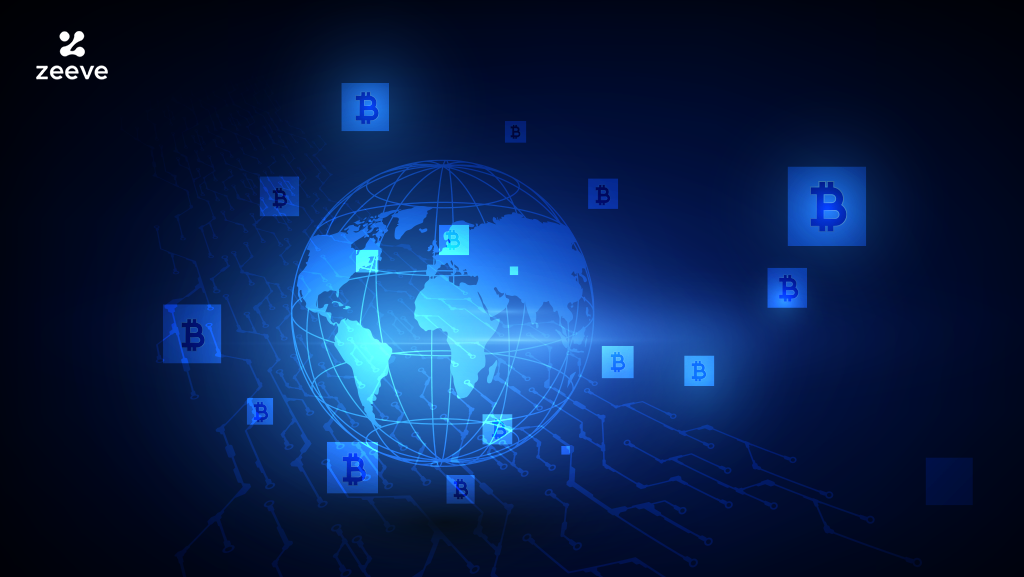Blockchain is a technology that allows the data to be stored on a global scale so that no one can distort or tamper with it. Anyone on the network can see the data. However, it’s quite difficult to get control over the network.
An appropriate infrastructure or a robust framework is essential for any technology to function. Similarly, the blockchain also requires an infrastructure. In recent years, blockchain has had multiple applications, and there is a lot of sensitive information about — individuals, organizations, enterprises, etc. — on the network. It’s quite important to make the network secure for everyone. However, many of us get carried away by the complexities of the blockchain.
Blockchain is a public record of data that is distributed between computers all around the world. Suppose in a supply chain management blockchain network. All the people on the network exactly know from where the raw materials are sourced and about any of the transactions going in between. Everything on the network is transparent to its users. And transparency is possible because of the underlying technology of blockchain.
In this blog, we will learn about blockchain nodes, their type, and its functions. We will also see why deploying the blockchain node on your own isn’t a great idea and how opting for node service providers is better.
Introduction to Blockchain
Let’s rewind our knowledge of blockchain. Blockchain consists of blocks, and each block has a cryptographic hash of the previous block. You can consider a cryptographic hash as a secret QR code. There is also a timestamp and transaction data added to it. However, no authority controls the blockchain. Therefore, nodes are the backbone of the blockchain infrastructure, which acts as an authority.
These are the computers present on a blockchain network based on the concept of peer-to-peer networks. Different blockchain nodes across the globe validate the transactions & make the network more robust.
What are Blockchain Nodes
The execution of any transaction occurs on the blockchain only because of the presence of the node. The nodes are the network stakeholders which act as a communication hub. The node must confirm the legitimacy of the transactions based on the signatures present. Nodes can accept or reject the blocks depending on the information. If the block is accepted, the block’s data is stored on the existing block.
Let’s understand with an example of bitcoin. There are two types of nodes on it. There are full nodes that store a copy blockchain. Then there is a lightweight node for the users. When the full nodes accept the transaction, then only it is being saved on the blockchain network.
The Use of Blockchain Nodes
The nodes are essential to provide credibility to the data on the network. After the nodes approve data, then only the information is maintained globally. If there is any modification on one block, then the subsequent information on other blocks has to be changed; as all of them are previously linked with each other.
The “decentralization” feature is present on the blockchain only because of nodes. The nodes are proof of integrity. Because if any of the information on one ledger system is changed. Still, it isn’t possible to damage other ledgers as well. The cryptographic hashing technology merged with nodes has made the blockchain trustworthy.
Types of Blockchain Nodes
Nodes are majorly divided into two types: full nodes and light nodes. Let us have a look:
1. Full Nodes
As the name suggests, the node is responsible for maintaining all the information of the transaction records. These are part of blockchain’s governing model. Any upgradation on the blockchain network occurs only after the “most of the full nodes” admit to it.
“Most of the full nodes” means that there must be a huge majority. Otherwise, suppose 60% agree to a modification while 40% don’t. In such cases, a forking process is done. Where the network is split into two parts of 60 and 40. Full nodes are further classified into:
Pruned Full Nodes
There is a limit on how many blocks are stored by a full node on the blockchain. Thus the pruned full nodes delete the oldest blocks to make space for the new blocks. The old blocks aren’t completely deleted; their sequence and metadata are maintained for future processing.
Archival Full Nodes
These have more memory space than pruned full nodes and maintain the full blockchain database. These are the main components of full nodes and have four subcategories.
- Authority Nodes
In a public blockchain, it is essential to govern the blockchain to keep it secure from unwanted interactions. The authority nodes authorize the other nodes before they join the blockchain network. It also authorizes the other nodes’ access to a different blockchain network.
- Miner Nodes
A consensus mechanism called proof-of-work (PoW) uses a mining process to validate any transaction. In mining, few mathematical functions must be solved to complete a transaction. A miner node has a special function of carrying out the mining.
- Master Nodes
The master nodes maintain the existing network and validate the transactions. It has no other task to do. However, it benefits the users by rewarding them when they run master nodes.
- Staking Nodes
As mining is done on the PoW mechanism, staking is performed on the proof-of-stake (PoS) mechanism. The staking nodes do not possess any high computation power, and it is being selected on the blockchain network by keeping in mind certain factors such as coinage, etc. The selected staked node has only to validate the transaction.
2. Light Nodes
The light node only stores the block headers, it stores requisite data for faster transactions. The light nodes are also known as Simplified Payment Verification nodes (SPV nodes).
There are two more types of nodes. Those are less prominent in comparison to full nodes and light nodes. One of them is the super node responsible for implementing the blockchain protocol. The other is the lightning nodes which create a separate network for the users to reduce congestion in a network.

Functions
Here are a few of the basic functions of the node. Let’s understand them more in-depth:
Transaction Processing
Nodes receive the information regarding the transaction. The node checks the legitimacy of the transaction on the blockchain network. Accepts the transaction if it’s valid. Records it on the ledger and transfers the data back to peers as well. Synchronize the information with other nodes as well.
Data Accommodation
Save and store the current blockchain information on the existing blocks. The nodes add blocks to the blockchain after the consensus creates the new block. It also syncs up to maintain the transaction copy on the ledger.
Access to the ledger
The nodes permit access to the data on the ledger. If you have seen the transactions happening on any blockchain network or tried to get transaction details at that moment, you are interacting with a node to access data.
Difference between Node and Miner
Many times both the terms are used interchangeably. However, the miner is a complete node, while the opposite of it isn’t true. A miner operates a complete node. The miner has nothing to do with identifying the previous transaction’s history and legitimacy. While nodes receive, store and broadcast all the transaction-related data. Nodes keep a history of all the transactions. When nodes validate the transaction, then the process of mining starts.
Problems while Deploying Node yourself
Self-deploying the node isn’t easy. Talking about Ethereum, one needs to have 16 gig RAM and an SSD disk. Even if you acquire the hardware, there are software processes complex to perform by an individual.
- There is limited bandwidth on the internet. In addition, there are traffic restrictions and an unstable internet. Any interruptions while deploying, and you have to restart the deployment.
- In case of a side deployment, the deployment slows down a lot more.
- Bitcoin core gets affected due to any viruses on the network. Even when an antivirus program is installed on the computer. Windows computers are affected mostly while self-deploying the node.
Advantages of Using a Node Infrastructure Management Platform
How about using all your time to develop your services rather than deploying the node yourself?
Node as a service provider helps you in saving time and energy. The provider can manage, build and deploy the blockchain nodes for your hassle-free blockchain usage.
By using the node services, the blockchain infrastructure is easily operated using the node services as the node service provider sets up the nodes by employing crucial technologies.
The overall operating costs are also less as the node service provider automates the network. Thus you can spend time understanding the market demand and curating strategies for your business instead of self-deploying the node.
Summing it all up
The blockchain nodes are responsible for storing the complete copy of all the stored data on a blockchain platform. These are the building blocks of blockchain-based applications. However, the process of node maintenance and running process is both time-consuming and expensive.
Node service providers are the best to help you to find the tools and the infrastructure that comes in handy. Nodes are critical for the blockchain network’s operation, and we know that the deployment process is becoming demanding daily. Thus choosing a node provider which offers quality service and enhanced security at optimum cost is one of the best choices.
Partner with Zeeve
Zeeve helps DevOps teams ease operational, security, and performance challenges while deploying and managing Blockchain nodes and networks. We are an enterprise Blockchain Management Platform that helps deploy, benchmark, and manage Blockchain networks and provides no-code automation capabilities for Blockchain deployments.
Our team will manage the Blockchain network for you and provide you with a hassle-free experience of blockchain. Get in touch with us for managing, and deploying the nodes. Seek advice from us!






















